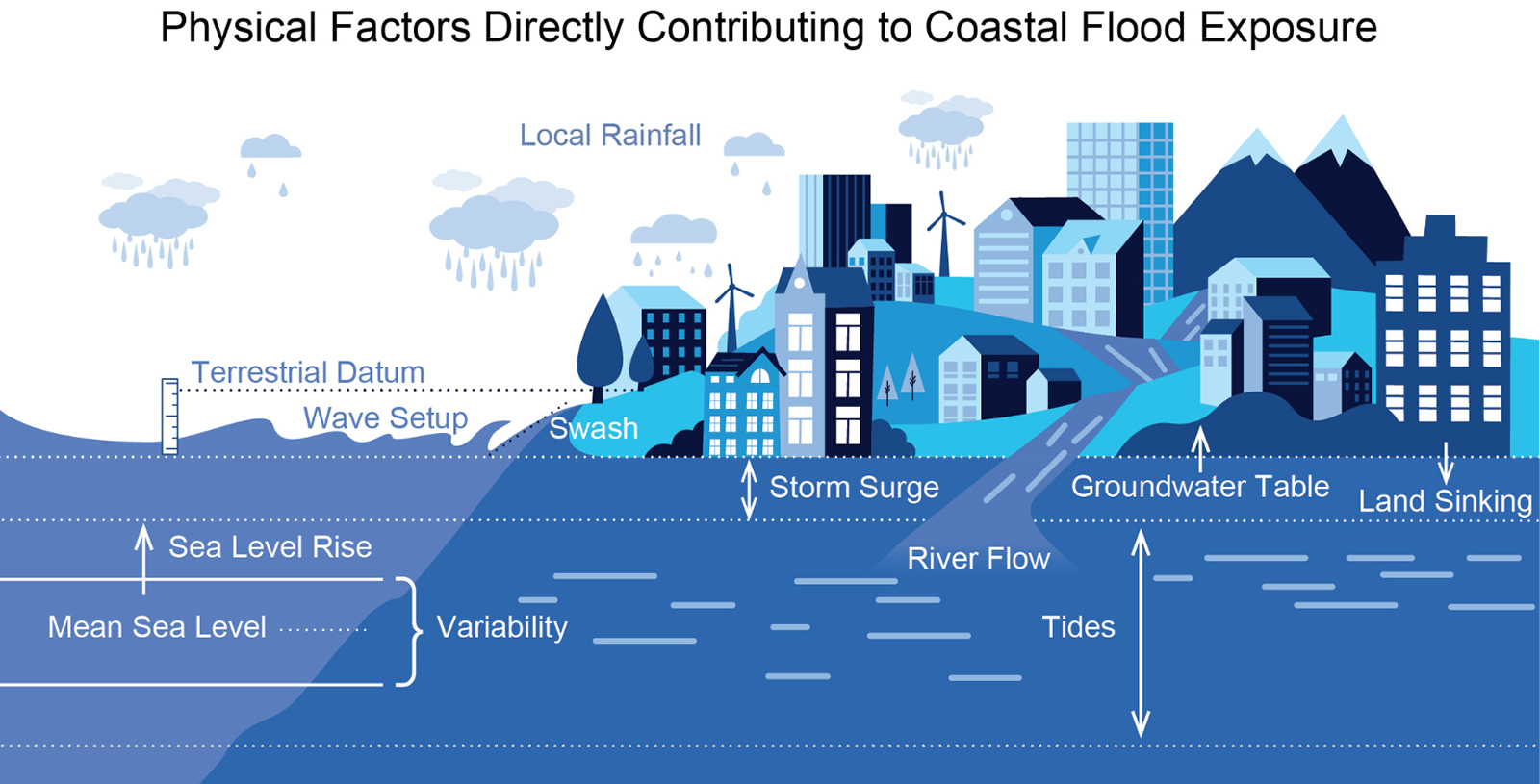The question for us is what we're going to do about it
By Frank Carini / ecoRI News staff
 |
| Setups like this one on the coast of South Kingstown, R.I., will do little to impede the sea’s advancement during the next three decades (Frank Carini/ecoRI News) |
The climate crisis has taken root. The United Nations’ latest climate report explains how deep this worldwide problem is embedded.
Closer
to home, another report published last month is equally alarming, for the
present and future of southern New England. The National Oceanic and
Atmospheric Administration’s 2022 Sea Level Rise Technical
Report warns that the United States will see as much sea-level
rise, about a foot, in the next three decades as it did during the entire
previous century.
Rhode
Island, Massachusetts and Connecticut, like much of the rest of the Atlantic
Coast, is a sea level-rise hot spot. The National Aeronautics and Space
Administration notes that every inch of sea-level rise results in the loss of
about 100 inches (8.3 feet) of beach. Locally, sea levels have already risen
nearly a foot since the 1930s.
Thirty
years, the length of a standard mortgage, is not a long time in the scope of
hundreds or even thousands of years often referenced in climate research. But
both February reports feature an abundance of detailed scientific information
that can no longer be ignored.
The
U.N.’s Intergovernmental Panel on Climate Change (IPCC) report, Climate Change 2022: Impacts,
Adaptation and Vulnerability, describes the planet’s present and
future in definitive statements.
“Climate
change has already had diverse adverse impacts on human systems, including on
water security and food production, health and well-being, and cities,
settlements and infrastructure.”
The
3,675-page report is the most detailed look yet at
the threats posed by global warming. It concludes that nations are not doing
enough to protect cities, coastlines, farmland and infrastructure from the
hazards of a changing climate, nor are they doing enough to mitigate future
impacts.
The
dangers of the climate crisis are mounting so rapidly that they could soon
overwhelm the ability of both nature and humanity to adapt unless greenhouse
gas emissions are quickly reduced, according to the IPCC report.
Written
by 270 researchers from 67 countries, the report is “an atlas of human
suffering and a damning indictment of failed climate leadership,” according to
António Guterres, the United Nations secretary general. “With fact upon fact,
this report reveals how people and the planet are getting clobbered by climate
change.”
The multi-agency NOAA report offers
projections out to the year 2150 and information to help municipalities assess
potential changes in average tide heights and height-specific threshold
frequencies as they strive to adapt to sea-level rise.
“For
businesses along the coast, knowing what to expect and how to plan for the
future is critical,” said U.S. Secretary of Commerce Gina Raimondo in
announcing the NOAA report. “These updated projections will help businesses,
and the communities they support, understand risks and make smart investments
in the years ahead.”
Raimondo,
the former governor of Rhode Island who pushed hard for the construction of a
fossil fuel power plant in the woods of Burrillville, was the first government
official quoted in the Feb. 15 press release,
even before the national climate advisor and the NOAA administrator.
One
of the most striking findings of the NOAA report is that sea level along the
contiguous U.S. coastline is projected to rise 10 to 12 inches on average
between now and 2050, marking the same level of increase that occurred between
1920 and 2020. The report suggests there could be an additional 1 to 5 feet of
sea-level rise by 2100.
With
the exception of the Gulf Coast, NOAA models project those living and working
along the East Coast will experience much higher sea levels, because of a
combination of factors such as geological forces, the shifting of tectonic
plates and the spin of the Earth.
This
rise in ocean waters will bring with it more frequent and damaging floods,
according to the 111-page report. By 2050, the increase in tide and storm-surge
heights will cause a major shift in coastal flood regimes. Buildings, homes,
roads, substations and critical infrastructure will need to relocate to higher
ground.
In
30 years, the report notes, moderate flooding is expected to occur, on average,
more than 10 times as often as it does now. Major flooding events, described as
“destructive,” will occur about five times more frequently.
Salt
water will infiltrate groundwater and freshwater bodies more frequently,
damaging private septic systems and drinking water supplies. Coastal wetlands
will drown, destroying vital wildlife habitat and removing natural storm
buffers.

